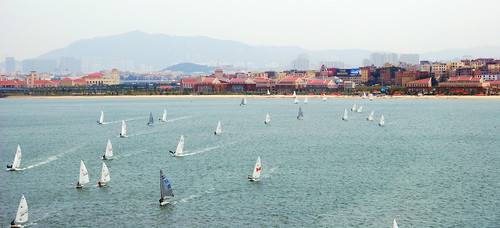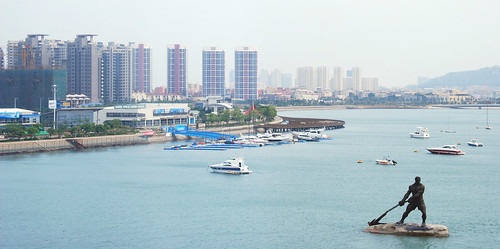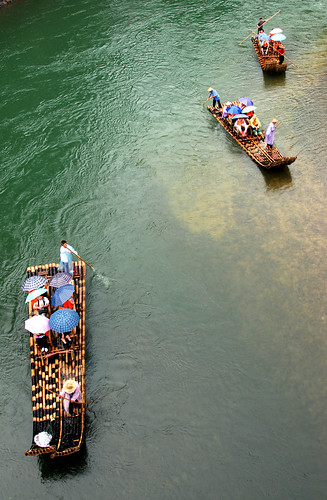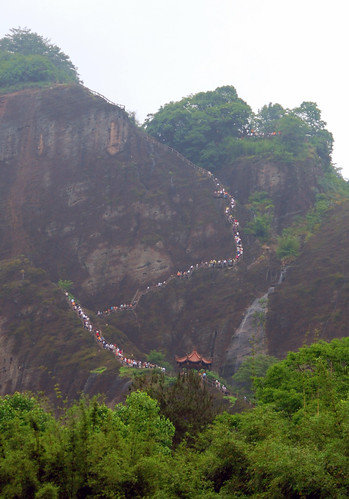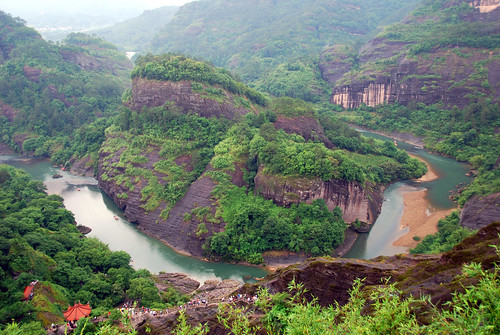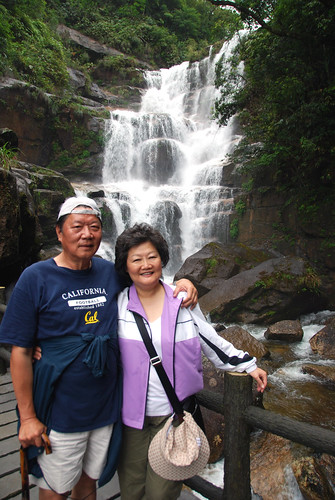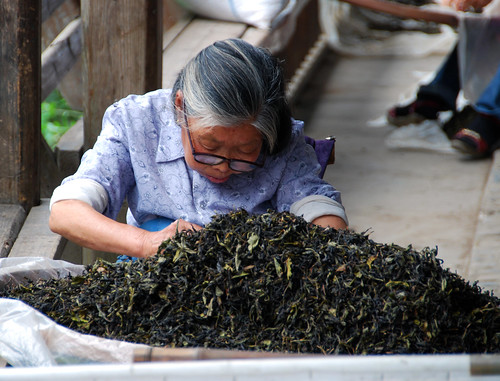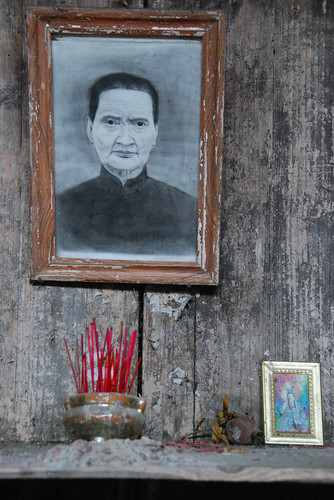Posts Tagged ‘Fujian’
The final stop on our two-week trip through China with my parents was Xiamen, a city located on the southwest coast of Fujian province. Xiamen is a city, but it’s very different from other Chinese cities. First of all, because Xiamen is coastal, the air quality is supposed to be quite good (though it was still pretty hazy when we were there). Second, the Chinese government has made the buses very cheap in order to encourage public transport, so there are hardly any motorcycles or bikes on the road. And finally, Xiamen is a mere 2 km away from Jinmen, a Taiwanese island (the one that was bombed throughout the 50s and 60s by the Chinese), so there is much trade and travel between the the two countries. The people of Xiamen even speak the local Taiwanese dialect.
All of this makes Xiamen feel almost like a generic big city in Taiwan, which (in general) was not really that interesting to us…but we did do a few things of note in the city proper. We checked out a memorial to a local merchant who made his fortune in Singapore and came back to his hometown of Xiamen in order to develop the city (many towns in China were developed in this way—through the benevolence of one of it’s people).
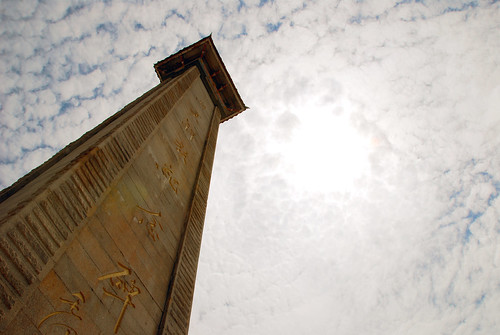
Memorial to a man who helped build universities and other public institutions in Xiamen.
And we visited the island of Gu Lang Yu, which is Xiamen’s main tourist attraction. I think all of us in the group were pretty tired at this point on the tour, so we didn’t explore too much of the island. Given more time and energy, I am sure it would have been interesting—Gu Lang Yu has an international past, with many ex-pats living on the island. Today, it is known as “Embassy Island,” with something like 100 foreign embassies squeezed onto it’s tiny body.
By far the most interesting part of our time in Xiamen was actually our visit to a place about 3 hours outside of the city, a place called Hakka House. The Hakka are an ethnic minority in the region that live in huge, communal, circular houses made out of mud, sticky rice, and stones.

View of Hakka House from above.
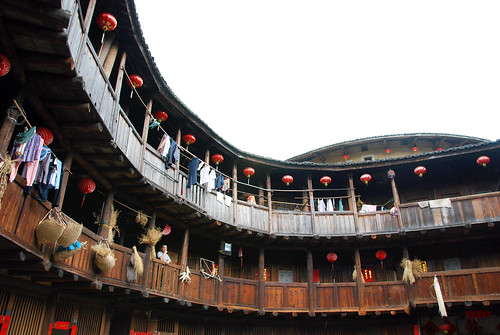
View of Hakka House from the inside.
Hakka houses are are built in a circular shape for protection from local bandits and animals. They are really big, but they house only one family…though “one family” can mean up to 4 generations of grandparents, parents, kids, uncles, cousins, etc. The first floor of a Hakka house is all kitchens, with storage on the second floor, and living quarters on the top floor. It can take years to build a Hakka house, since they are made of mud and sticky rice…you have to wait for the first floor to dry before building the next floor.
Though it has become a UNESCO World Heritage site, the Hakka House is still a functioning village. We saw many domestic scenes as we walked through the site:
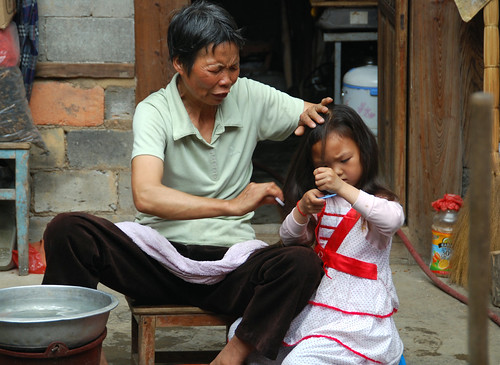
Little girl getting her hair washed by her grandmother. She was screaming and carrying on as her grandma tried to comb the tangles out of her hair.
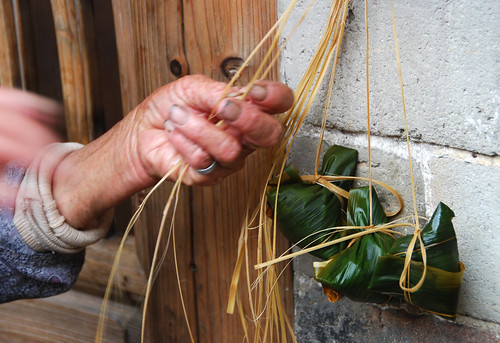
Woman with amazing hands wrapping zong zi.
Before we went to Hakka House, we stopped by a local village for lunch that was having it’s market day. We had some free time before lunch to wander around and check out all the stuff for sale: live chickens, strange vegetables, intestines hanging on meat hooks…
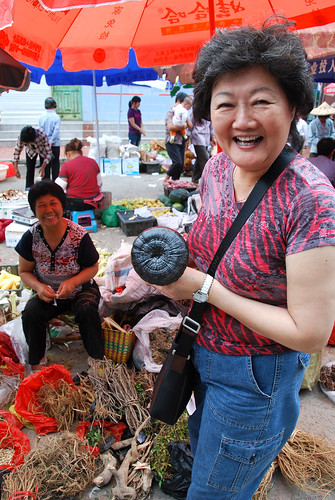
My mom with some sort of mushroom.
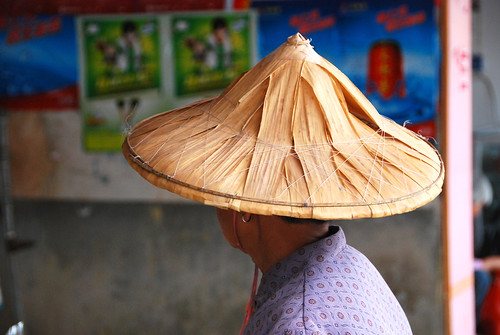
I don’t know why, but I LOVE this photo of an old lady in the market.
I really enjoyed our time at Hakka House and this local village, but our visit was far too short. Because it was a 3 hour drive from Xiamen each way, we had to hurry back for our special goodbye dinner, where we played a Xiamen dice game and ate something called “sea worm.” I have to admit, it was fun to do this eating tour with Frank, but I am not sure how much more crazy stuff we could have eaten!
In Xiamen, we said goodbye to my parents as we prepared to head our separate ways (us to Yangshuo, and my parents back to Taiwan via Jinmen). We had an incredible time traveling together with Eddo as a family, and it was truly a special experience to be with my mom on her first visit to China and with my Dad on his first visit back to Taiwan in 26 years. I feel that through this trip, I understand so much more about my parents than I did before. As I told Jeremy, “In the US, I feel like my parents are so Chinese. In Taiwan, I felt like they were Americans, and in China, I feel like they are Taiwanese!” The truth is, they are all three of those things, as am I, as is my brother. I see my parents in a new light now…I never thought of them as “international” before, but traveling through Asia with them, I see that they really are the embodiment of that word. I learned so much more about my heritage and I understand more deeply my responsibility to transmit the lessons I’ve learned from my parents and my grandparents to the next generation.
In an email, my parents described this leg of our journey as “the trip of a lifetime.” Indeed, it was a trip of many lifetimes, and of many lives convening to lead us to this place, together, as a family. Thank you, Mommy, Daddy, and Eddo for coming out to travel with us, sharing your stories, and discovering this land that is both familiar and unfamiliar to us all. We will treasure this time together for many more lifetimes to come.
After saying goodbye to Eddo in Shanghai, we headed off to Wuyi Shan (Wuyi Mountain), in Fujian province. Our introduction to Wuyi Shan was kicked off quite ceremoniously by The Scariest Dinner We’ve Had So Far. We were taken to a restaurant specializing in “local delicacies”, if by “local” you mean “scary” and by “delicacies” you mean “all breed of mountain animals.” We ate wild boar and snake and mountain toad and turtle and wild pheasant and and…the list goes on. By the end of the meal we didn’t know if we should be more scared of what dish was coming next or of ourselves!

This is what snake soup looks like.
After sleeping off our scary meal, we started the next day off with a ride on a bamboo raft.
Our bamboo raft man told us many, many jokes in Chinese (of which I understood exactly NONE). My parents had a good time, though, so that’s all that matters. Of course, Bamboo Raft Man is no match for my Dad when it comes to getting attention…as we passed through a narrow channel, my Pops made like Tarzan and howled mightily, his voice bouncing off the rocks from one end of the river to the other.
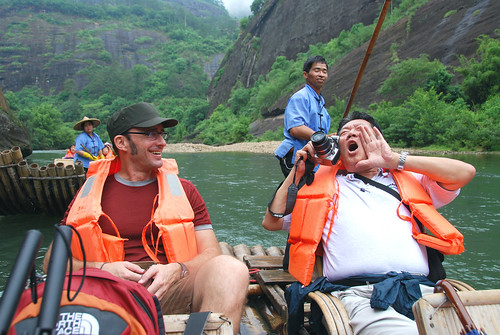
Um, is this REALLY my father-in-law?!?
As you’re floating down the river, you can see a bunch of people climbing the mountain; they look like little ants scrambling up the steep rock face.
Later on that afternoon, we did a little role reversal and WE were those little ants on the mountainside! The view from up top is stupendous, and despite the super steep climb on slippery wet rock, we all made it to the top! I was extra proud of my mom for pushing hard to make it up the mountain!
The following day, we did some more hiking near the Blue Dragon Waterfall area, which was also quite pretty.
But to me, the most interesting part of the Wuyi Shan area was the little run-down village (Xiamei) that the rest of the tour group wasn’t interested in at all. In fact, only my family walked through the entire village—the rest of the tour group turned around halfway through and waited on the bus. I guess they thought it was TOO run down and dirty, but I felt it was refreshing to see a place that wasn’t cleaned up and commercialized and polished for the tourist market.
The main drag in the village was filled with old ladies sorting tea leaves. Tea is a big cash crop for rural China, so cultivating tea is one of the major ways you can make a livable wage outside of the cities. Apparently tea sorters get paid for the number of bad leaves they pick out of the batch (not the number of good leaves they leave in!).
I liked observing the people—young and old—who lived in this town, and wondering what their lives were like: what makes them laugh? Where do they brush their teeth? What do they want to be when they grow up? Silly yet intimate questions, I guess.
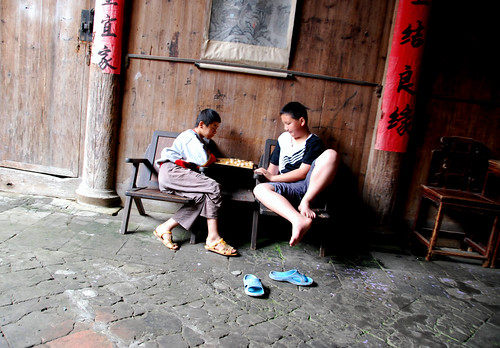
Two boys playing Chinese checkers.
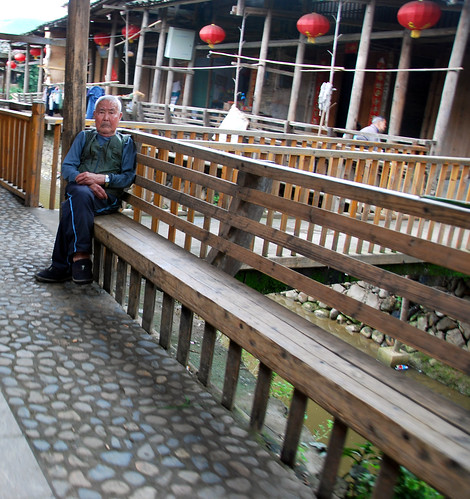
Old man on the main drag in Xiamei village.
Xiamei seems a world apart from places like Shanghai. It makes you wonder…as the government puts more and more effort into improving (economically) the lives of its poorer rural residents, how long before the people of Xiamei decide to move to the cities, where they can make more money hauling loads of laundry up a multi-story building than they can sorting tea leaves? How much longer before places like Xiamei are simply a relic?
